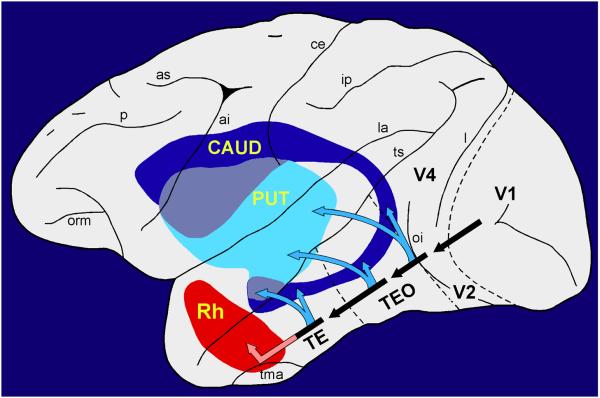Figure 1.
Nearly the entire length of the ventral visual stream (black arrows) projects to the ventrocaudal neostriatum, including both the tail of the caudate nucleus (CAUD) and the ventrocaudal part of the putamen (PUT), which thus receive relatively unprocessed input from early visual areas (e.g. V2) as well as highly processed input from the final station in the pathway (area TE). By contrast, the entorhinal/perirhinal or rhinal (Rh) cortex receives directly only highly processed visual input. The direct visuo-striatal connections (Saint-Cyr et al., 1990) form part of the cortico-basal ganglia learning system, whereas the visuo-rhinal connections (Van Hoesen and Pandya, 1975; Suzuki and Amaral, 1994; Saleem et al., 2007) form part of the cortico-limbic learning system. For simplicity, the cortico-striatal connections are shown projecting point-to-point, whereas in fact the terminal fields in the striatum often form longitudinal strips and, hence, can overlap densely. Abbreviations of sulci: ai, inferior arcuate; as, superior arcuate; ce, central; ip, intraparietal; l, lunate; la, lateral; oi, inferior occipital; orm, medial orbital; p, principal; tma, anterior middle temporal; ts, superior temporal.

